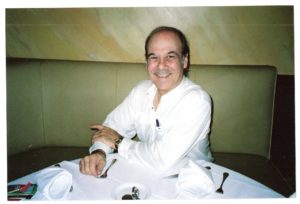The Florida East Coast Railway Story Continues
[AdSense-A]
The story of the Florida East Coast Railway (FEC) is so incredible, so totally unique, so almost beyond belief that were it not absolutely factual it would be fodder for a movie trilogy.
When we concluded our previous discussion on this topic, we left off by noting that the St. Johns Railway, which ran from St. Augustine due west to a dock on the St. Johns River at a point then and now known as Tocoi Landing was conceived in 1858 by Dr. John Westcott as a mule-powered freight hauler. However, when the 14 ½ mile line opened in 1859 it immediately began carrying passengers.
Torn up by Southern troops during the Civil War it was reopened as a steam-powered line. Eventually, in 1888, the railroad was purchased by Henry Flagler and that little carrier, the first built of what someday would become the FEC, was also, in 1896, the first piece or part of the railroad to be abandoned. That discontinuance occurred because, simply put, the first purchased of the Flagler railroads, the Jacksonville, St. Augustine & Halifax River Railroad, which he bought on December 31, 1885, was better equipped to handle heavy traffic than the little short line it would replace. In addition, the through rail routing, once the first bridge across the St. Johns River in Jacksonville was completed, allowed both freight and passenger trains to continue their journeys to and from St. Augustine without transloading at Jacksonville and then again at Tocoi Landing.
The saga of Henry Morrison Flagler is very well known, and it is not within our purview to provide a biography herein. Rather, we focus on his life following his arrival in Florida.
Flagler’s first wife, Mary, was not doing well in the terrible northern winters in their home city of Cleveland, and doctors advised him to take her to Florida, a place which he knew nothing about but where, he was told, “the summer spends the winter.”
In 1878 the Flaglers sojourned in Jacksonville, which, because of the warmth, helped Mary’s condition to improve. However, Henry found the town, formerly known as “Cow Ford,” to be a distasteful place, with both poor lodgings and equally as poor food. They did not return to Florida until 1881 at that point with Mary under the care of a full time nurse, Ida Alice Shourds. The Flaglers and Ida Alice came to spend the winter in Orange Park, in Clay County, just a bit west and a bit south of Jacksonville and although Mary did improve slightly she succumbed to her illness and died later that year.
Ida Alice had been a loving and caring assistant to Mrs. Flagler and she was a great comfort to Henry. Eventually, after a suitable period of mourning, Henry asked Ida Alice for her hand in marriage. In 1883 the Flaglers took a delayed honeymoon, that time in St. Augustine.
Mr. Flagler loved the ancient city but he could not understand why such a delightful and enchanting place did not have accommodations fitting for a person of his ilk.
In order for our readers to truly understand the use of that word in this context, it can be stated that, if Henry Flagler were alive today, people of his ilk would be such as Bill Gates; Warren Buffet; Michael Blumberg and Mickey Arison. But we are obviously not talking (writing) about today, but, rather, the time period and era which is known in American history as “the gilded age.” Flagler’s gilded age contemporaries—his ilk, as it were—included such as Rockefeller; Morgan; Plant; Belmont; Gould; Stuyvesant; Carnegie; Mellon and other great industrial barons.
At some point Mr. Flagler determined that he was going to build the single greatest and most sumptuous resort in America, in St. Augustine, and in 1885 began construction on the building that still exists today as Flagler College.
St. Augustine was connected to the St. Johns River by the rickety, little narrow gauge railroad named above, the J. St. A. & H. R. R.R. As we will learn in the next chapter, it was the shoddy quality of the construction of that road, coupled with its inability to deliver construction materials to the contractors, Messrs. McGuire and McDonald, that would, coupled together, form the linchpin for the great and unparalleled contributions of Henry M. Flagler that would begin shortly thereafter.
[si-contact-form form=’2′]


